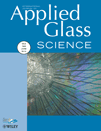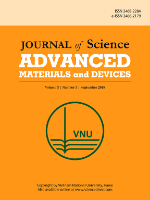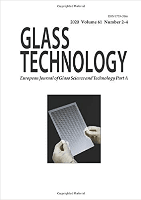
AMERICAN CERAMIC SOCIETY BULLETIN
Scope & Guideline
Connecting Past Discoveries with Future Innovations
Introduction
Aims and Scopes
- Ceramic and Glass Material Innovations:
The journal focuses on novel developments in ceramic and glass materials, including advancements in processing techniques, material properties, and applications in various industries such as aerospace, electronics, and construction. - Sustainability and Environmental Impact:
Research that addresses sustainability, including the reduction of emissions in production processes, recycling of materials, and the development of eco-friendly alternatives, is a central theme of the journal. - Interdisciplinary Applications:
The journal highlights the interdisciplinary nature of ceramics and glass, showcasing their applications in diverse fields such as biomedical engineering, energy storage, and environmental remediation. - Technological Advances in Manufacturing:
It covers technological innovations in manufacturing processes, including additive manufacturing, 3D printing, and advanced characterization techniques for ceramics and glass. - Materials Science Education and Outreach:
The journal emphasizes the importance of education and outreach in materials science, promoting initiatives that engage students and the community in understanding ceramics and glass.
Trending and Emerging
- Advanced Energy Storage Solutions:
There is a growing focus on the development of advanced energy storage systems, such as solid-state batteries and novel supercapacitors, highlighting the role of ceramics and glass in sustainable energy technologies. - Sustainable Manufacturing Practices:
Research on sustainable practices in manufacturing, including waste reduction, energy efficiency, and the use of recycled materials, is increasingly prevalent, reflecting industry-wide shifts towards greener operations. - Bioceramics and Medical Applications:
The trend towards bioceramics for medical applications, such as drug delivery systems and tissue engineering, is gaining momentum, showcasing the interdisciplinary nature of ceramics in healthcare. - Additive Manufacturing and 3D Printing:
The rise of additive manufacturing techniques for ceramics and glass is a significant trend, with research exploring innovative methods and applications in various sectors including aerospace and construction. - Digital Technologies and AI in Materials Science:
There is an emerging interest in the integration of digital technologies, including artificial intelligence and machine learning, into materials science for the design and optimization of ceramic and glass materials.
Declining or Waning
- Traditional Ceramic Applications:
There is a noticeable decline in papers focused on traditional ceramic applications, such as pottery and conventional tableware, as the emphasis shifts towards advanced and functional ceramics. - Non-Energy Related Glass Applications:
Research on glass applications that do not pertain to energy efficiency or sustainability has decreased, as the journal increasingly prioritizes topics that align with modern energy challenges and environmental concerns. - Historical Glass and Ceramic Studies:
The exploration of historical and archaeological studies related to ceramics and glass appears to be waning, as current research trends lean more towards contemporary applications and innovations. - Conventional Manufacturing Techniques:
There has been a reduction in publications about conventional manufacturing techniques, as newer methods such as 3D printing and advanced sintering processes gain more attention. - Generalized Material Properties:
Studies that focus solely on generalized properties of ceramics and glass without specific applications or innovations are becoming less common, with a shift towards targeted and application-driven research.
Similar Journals

Advanced Materials Technologies
Bridging Disciplines in Material ScienceAdvanced Materials Technologies is a leading scholarly journal published by WILEY, dedicated to the rapidly evolving fields of materials science and engineering. With an impressive 2023 impact factor reflected in its Q1 ranking in Industrial and Manufacturing Engineering, Mechanics of Materials, and a notable position within the materials science community, this journal stands as a premier platform for disseminating innovative research and technological advances. The journal encompasses a diverse range of topics, from the fabrication and characterization of advanced materials to their applications in various industries, thus fostering interdisciplinary collaboration among researchers, professionals, and students. Since its inception in 2016 and looking forward to 2024, Advanced Materials Technologies continues to provide unparalleled access to high-quality, peer-reviewed articles, ensuring that it remains a vital resource for anyone involved in the design and optimization of advanced materials.

Journal of the Korean Ceramic Society
Leading the way in ceramic materials research and discovery.The Journal of the Korean Ceramic Society is a premier academic journal dedicated to advancing the field of ceramics and composites, serving as a vital platform for researchers, professionals, and students alike. Published by SPRINGER HEIDELBERG, this journal boasts an impressive scopus rank of #49 out of 127 in the Materials Science category, with a commendable 61st percentile ranking, highlighting its impact and relevance in contemporary research. Since its inception, the journal has been converging significant research contributions from 2007 to 2024, consistently fostering innovation in ceramic materials and their diverse applications. Although it operates under a traditional access model, the journal remains committed to disseminating high-quality research in ceramics and composites, currently positioned in the Q2 category for 2023. With a strategic focus on the latest developments, methodologies, and interdisciplinary approaches, the Journal of the Korean Ceramic Society is essential reading for anyone engaged in materials science and engineering, aiming to navigate the complexities of this dynamic field.

International Journal of Applied Glass Science
Unveiling the Future of Applied Glass TechnologyThe International Journal of Applied Glass Science, published by Wiley Periodicals, Inc, is a leading scholarly journal in the field of materials science, particularly focusing on the applications and innovations in glass science. Since its inception in 2010, the journal has served as a vital platform for disseminating high-quality research and advancing knowledge within the community, maintaining a respectable Q2 ranking in the Materials Science (Miscellaneous) category as of 2023. With an ISSN of 2041-1286 and E-ISSN of 2041-1294, it continues to attract a diverse array of manuscripts that explore fundamental and applied aspects of glass technology and its countless applications. Scholars and professionals benefit from the journal’s commitment to transparency and accessibility, even in the absence of an open access model, thereby reinforcing its relevance in an evolving academic landscape. The journal is positioned to be an influential resource for researchers, professionals, and students keen to stay at the forefront of glass science developments.

Elastomers and Composites
Connecting Researchers to the World of Composite MaterialsElastomers and Composites is a leading academic journal dedicated to the advancement of knowledge in the fields of polymer science and materials engineering, specifically focusing on elastomers and composite materials. Published by RUBBER SOC KOREA, this journal serves as a vital platform for researchers and professionals to disseminate innovative research findings and insights in material properties, applications, and synthesis techniques. Although it currently does not offer open access, the journal provides rigorous peer-reviewed content that enhances the global dialogue on elastomeric materials and their composites, reflecting its commitment to high-quality scholarship. With a strong emphasis on practical relevance and theoretical advancements, Elastomers and Composites aspires to reshape industry practices and academic thought, making it an invaluable resource for students, researchers, and practitioners alike. Positioned strategically within its field, this journal fosters collaboration and dialogue among scientific communities, all while supporting the growth of cutting-edge research programs worldwide.

Journal of Science-Advanced Materials and Devices
Empowering Discoveries in Advanced Materials and DevicesJournal of Science-Advanced Materials and Devices is a leading open-access journal published by Vietnam National University, dedicated to advancing the field of materials science through cutting-edge research and innovative developments. Since its inception in 2016, this journal has become a pivotal platform for sharing insights and discoveries in various subfields, including biomaterials, ceramics and composites, and electronic, optical, and magnetic materials. With impressive quartile rankings, including Q1 across multiple categories in 2023, and a notable Scopus ranking placing it in the top 15th percentile for ceramics and composites, it highlights the journal’s influence and prestige within the global academic community. Open Access since its launch, the journal aims to facilitate unrestricted dissemination of scholarly work, empowering researchers, professionals, and students to engage with the latest advancements. The Journal of Science-Advanced Materials and Devices is vital for those seeking high-quality contributions that influence both theoretical understanding and practical applications in the ever-evolving landscape of materials science.

Advanced Powder Materials
Empowering Researchers with Open Access InsightsAdvanced Powder Materials, published by KEAI PUBLISHING LTD, stands at the forefront of research in materials science, particularly focusing on the intricate relationships within powder materials and their applications across several domains including catalysis, ceramics, energy, and coatings. With an Open Access policy initiated in 2022, this journal ensures that cutting-edge findings are readily accessible to researchers, professionals, and students globally. Based in Beijing, China, the journal has gained recognition for its exceptional impact, achieving a prestigious Q1 ranking in multiple categories such as Catalysis, Ceramics and Composites, and Materials Science. The journal not only promotes innovative research but also serves as a vital platform for interdisciplinary collaboration, significantly impacting the fields it covers, which also include notable rankings in Metals and Alloys and Surfaces, Coatings, and Films. By fostering an environment of knowledge sharing, Advanced Powder Materials is poised to make substantial contributions to the scientific community over its converged years from 2022 to 2024.

MATERIALE PLASTICE
Unveiling the Potential of Advanced MaterialsMATERIALE PLASTICE is a distinguished academic journal published by REVISTA CHIMIE SRL in Romania, focusing on the fields of Chemistry, Materials Science, and Engineering. With an ISSN of 0025-5289 and an E-ISSN of 2668-8220, this journal has a historical commitment to advancing the study of polymers and plastics since its inception in the early 1970s. Although classified in the Q4 category across multiple disciplines including miscellaneous chemistry and materials chemistry as of 2023, it serves as an important forum for researchers and professionals dedicated to innovative materials research and development. The journal’s resources, though not openly accessible, are pivotal for scholars seeking to deepen their knowledge in the mechanics of materials and interdisciplinary applications. MATERIALE PLASTICE is not only a repository of significant research findings but also a platform for fostering collaboration and discussion among a global audience that continues to strive for scientific excellence in polymer and materials studies.

JOURNAL OF CERAMIC PROCESSING RESEARCH
Transforming Ideas into Advanced Ceramic SolutionsJOURNAL OF CERAMIC PROCESSING RESEARCH, published by the Korean Association for Crystal Growth, Inc., serves as a vital source of scholarly communication in the field of ceramics and composites. With an ISSN of 1229-9162, this well-regarded journal aims to advance knowledge through rigorous research and publication of innovative studies that push the boundaries of ceramic processing technologies. Indexed in Scopus and boasting a 2023 Q3 ranking in the ceramics category, it provides a platform for researchers to disseminate their findings and engage with emerging trends in material science. The journal reflects a commitment to contributing to the scientific community, emphasizing the importance of interdisciplinary collaboration and advancements in fabrication techniques. Although it operates under a traditional access model, the journal is a beacon for researchers, professionals, and students, inviting them to explore breakthroughs from the years 2000 through 2024 and beyond.

Glass Technology-European Journal of Glass Science and Technology Part A
Innovating the Future of Glass Research and ApplicationsGlass Technology - European Journal of Glass Science and Technology Part A, published by the SOC GLASS TECHNOLOGY in the United Kingdom, is an esteemed journal dedicated to advancing the field of glass science and technology. With a focus on ceramics, composites, and materials chemistry, the journal plays a pivotal role in disseminating significant research findings and innovations in glass technology. Despite its current positioning in the lower quartiles (Q4) of the 2023 category rankings, this journal serves as a valuable platform for emerging research and novel technologies within its domain. Researchers, professionals, and students are encouraged to explore the journal's contributions from 2006 through to 2024, which include peer-reviewed articles, reviews, and case studies essential for anyone involved in the glass industry or related fields. Though it operates under a subscription model, it maintains rigorous academic standards, ensuring that each publication meets the highest criteria for quality and relevance.

JOURNAL OF ELECTROCERAMICS
Pioneering Research in Electroceramics and BeyondJOURNAL OF ELECTROCERAMICS, published by SPRINGER in the Netherlands, serves as a pivotal platform for advancing the field of electroceramics since its inception in 1997. With a keen focus on innovative materials and applications, this journal covers diverse areas encompassing ceramics and composites, condensed matter physics, and electronic materials, significantly contributing to interdisciplinary research. Although currently not an Open Access publication, the journal's engagement in rigorous peer review ensures the dissemination of high-quality research, supported by its respectable Q3 ranking in several relevant categories in 2023. Researchers and professionals will find value in its comprehensive scope, showcasing cutting-edge developments that shape the future of engineering and materials science. The JOURNAL OF ELECTROCERAMICS continues to play a crucial role in bridging theoretical discoveries with practical applications, making it an indispensable resource for students, scholars, and industry experts alike.